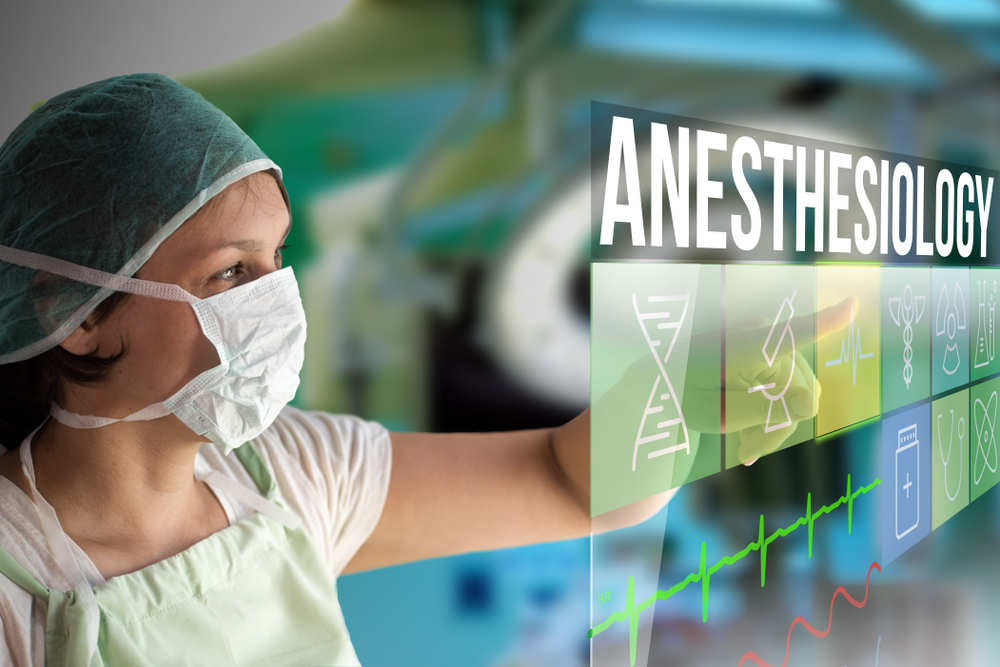- Phone: +91-7309038865, 730903887
- Mon-Sun: 24x7
- bmtckanpur@gmail.com

Anaesthesiology, is a branch of medicine that allows safe usage of medical drugs to induce a reversible state of total or partial lack of responsiveness to surgical procedures, so that they can be carried out smoothly, without causing any distress and inconvenience to the patient.
The Department of Anaesthesiology at Bhargava Medical and Trauma Center uses the most advanced, safe and patient-focused techniques in the delivery of anaesthetic care. Our team of extremely skilled and well-experienced anesthesiologists aims to provide optimum quality patient care and comprehensive patient care during the pre intraoperative and early post operative period.
🔷 Types of Anaesthetics –
The type of anaesthesia to be used depends on many factors like the procedure of your surgery and your current health.
1. Local anaesthesia: Numbs one small area of the body. You stay awake and alert during the procedure.
2. Conscious or intravenous (IV) sedation: Uses a mild sedative to relax you and a pain medicine to relieve pain. You stay awake, but may not remember the procedure afterwards.
3. Regional anaesthesia: Blocks pain in an area of the body, such an arm or leg. Epidural anaesthesia, which is sometimes used during childbirth, is a type of regional anaesthesia.
4. General anaesthesia: Acts on your whole body. You go to sleep and feel nothing. You have no memory of the procedure performed.

Critical Care aims to improve the care of critically ill patients.
🔷 What is critical care?
Critical care is medical care for people who have life-threatening injuries and illnesses. It usually takes place in an intensive care unit (ICU). A team of specially-trained health care providers gives you 24-hour care. This includes using machines to constantly monitor your vital signs. It also usually involves giving you specialized treatments.
🔷 Who needs critical care?
You need critical care if you have a life-threatening illness or injury, such as
• Heart attack
• Heart failure
• Kidney failure
• People recovering from certain major surgeries
• Respiratory failure
• Sepsis
• Severe bleeding
• Serious infections
• Serious injuries, such as from car crashes, falls, and shootings
• Shock
• Stroke

The importance of a healthy smile
1. Dental Implants –
Dental implants have changed the way dentistry has evolved over the last 25 years. An implant is a replacement for the root or roots of a tooth. They are used to secure crowns to the jawbone using titanium and titanium alloy. These metals are used because they are lightweight and biocompatible – which means they aren’t rejected by the body. Dental implants are used to replace teeth due to decay, disease, oral cancer, or a number of causes like smoking or alcoholism.
Dental implants are a longer process type of dental surgery to ensure that the bone is properly fused before the tooth can be attached. Implants require a procedure to create channels in the jawbone so the implants can be fitted with intimate contact with the bone. They generally require two to six months for the bone to fuse before they can have tooth restorations (a crown or bridge) attached in order to complete the process.
2. Reconstructive –
Accidents happen, and when there is a damage to the face due to sports injuries, falls, work-related incidents, or any kind of facial trauma, it can be scary and stressful. That’s why seeing an oral surgeon is the best course of action – they can offer solutions that will have you looking your best in no time! Dental surgery for facial reconstruction breaks down into two categories – soft tissue injuries and fractures.
Soft tissue injuries include trauma to the skin or gums, such as cuts on the inside of the cheek, lips, or tongue. Soft tissue injuries also include lacerations on the soft or hard palate.
Fractures relate to the the tiny bone tissue in your mouth, and includes reconstruction to the jawbone and teeth. Larger reconstructive surgeries go into the nasal cavities and the forehead, if the facial injuries are severe enough. In some cases, reconstructive surgery utilizes dental implants along with other methods of treatment and mechanics to repair jaw alignments and bone structure.
5. Cosmetic –
Cosmetic dental surgery comes in many different forms. Many times, cosmetic surgery is not a medically necessary procedure, but is used to improve the patient’s face or smile. Cosmetic procedures covers minor treatments like teeth whitening and investments like orthodonture.
Smile makeovers combine two or more procedures such as teeth whitening, dental veneers, bonding, or composite restoration. Treatments to make teeth brighter isn’t just teeth bleaching. Methods like bonding and veneers are also used to fix discoloration or stained teeth. Some patients even like having tooth shaping to fix the physical shape of their teeth. This is done by removing tooth enamel or filing the teeth.

Pediatrics is the branch of medicine dealing with the health and medical care of infants, children, and adolescents from birth up to the age of 18.
The aim of paediatrics is to reduce infant and child rate of deaths, control the spread of infectious disease, promote healthy lifestyles for a long disease-free life and help ease the problems of children and adolescents with chronic conditions.
Paediatricians diagnose and treat several conditions among children including:-
• injuries
• infections
• genetic and congenital conditions
• cancers
• organ diseases and dysfunctions
Paediatrics is concerned not only about immediate management of the ill child but also long term effects on quality of life, disability and survival. Paediatricians are involved with the prevention, early detection, and management of problems including:-
• developmental delays and disorders
• behavioral problems
• functional disabilities
• social stresses
• mental disorders including depression and anxiety disorders.

Laparoscopy, also known as diagnostic laparoscopy, is a surgical diagnostic procedure used to examine the organs inside the abdomen. It’s a low-risk, minimally invasive procedure that requires only small incisions.
Laparoscopy uses an instrument called a laparoscope to look at the abdominal organs. A laparoscope is a long, thin tube with a high-intensity light and a high-resolution camera at the front. The instrument is inserted through an incision in the abdominal wall. As it moves along, the camera sends images to a video monitor.
Laparoscopy allows your doctor to see inside your body in real time, without open surgery. The doctor also can obtain biopsy samples during this procedure.

A pregnancy is considered high-risk when there are potential complications that could affect the mother, the baby, or both. High-risk pregnancies require management by a specialist to help ensure the best outcome for the mother and baby.
Vaginal delivery is the preferred method for childbirth; and our expert Dr. Priyanka Bhargava is especially known for emphasizing on normal deliveries for her patients.

Otorhinolaryngologists (also known as otolaryngologists or ear, nose and throat or ENT Surgeons) are surgical specialists who diagnose, evaluate and manage a wide range of diseases of the head and neck, including the ear, nose and throat regions.
Areas of Expertise in Otolaryngology –
1. Allergy – treatment by medication, immunotherapy, or controlling of trigger factors.
2. Facial plastic and reconstructive surgery – on face, neck, or ear for medical, cosmetic, functional or reconstructive reasons.
3. Head and Neck – diseases, tumors, trauma, infectious diseases and deformities of the head, neck, and face. ENT specialists perform cosmetic and reconstructive surgery in these areas. They manage problems with the nerves in the head and neck that control sight, smelling, hearing, and facial movements.
4. Laryngology – disorders of the throat and voicebox, including speech, singing, eating, swallowing, and digestion.
5. Otology/neurotology – disorders of the ear, including nerve disorders, hearing and balance.
6. Pediatric otolaryngology – ENT diseases in children, including birth defects and developmental issues.
7. Rhinology – disorders of the nose and sinuses.
8. Sleep medicine is a sub-specialty in which some otolaryngologists have received certification.

Pediatrics is the branch of medicine dealing with the health and medical care of infants, children, and adolescents from birth up to the age of 18.
The aim of paediatrics is to reduce infant and child rate of deaths, control the spread of infectious disease, promote healthy lifestyles for a long disease-free life and help ease the problems of children and adolescents with chronic conditions.
Paediatricians diagnose and treat several conditions among children including:-
• injuries
• infections
• genetic and congenital conditions
• cancers
• organ diseases and dysfunctions
Paediatrics is concerned not only about immediate management of the ill child but also long term effects on quality of life, disability and survival. Paediatricians are involved with the prevention, early detection, and management of problems including:-
• developmental delays and disorders
• behavioral problems
• functional disabilities
• social stresses
• mental disorders including depression and anxiety disorders

Gastroenterologists are doctors who investigate, diagnose, treat and prevent all gastrointestinal (stomach and intestines) and hepatological (liver, gallbladder, biliary tree and pancreas) diseases.
Gastroenterologists treat conditions such as:
• gastrointestinal bleeding
• gastrointestinal cancer
• anaemia – a condition where the haemoglobin, the blood (a pigment that carries oxygen) is below normal levels
• inflammatory bowel disease, eg Crohn’s disease (inflammation of the lining of the digestive system), ulcerative colitis (inflammation and ulceration of the lining of the rectum and colon)
• short bowel syndrome
• jaundice – a condition where the skin yellows due to an accumulation of bilirubin the blood and tissues
• management of alcoholic, viral hepatitis (Inflammation of the liver caused by a virus) and autoimmune liver disorders (where the body attacks its own cells)
• diverticulitis – inflammation of the diverticula (small pouches) in the intestine
• gastroenteritis
• hepatitis

Respiratory medicine is concerned with the diagnosis and treatment of a wide variety of diseases of the airway and lungs, their linings and blood vessels, and the muscles and nerves required for breathing.
Respiratory medicine is closely linked to acute and general medicine as respiratory disorders account for approximately one-third of an unselected general medical take. Almost all respiratory physicians are trained in general internal medicine (GIM) as well as respiratory medicine.
This general medical training helps respiratory physicians treat patients holistically and always endeavour to involve patients in their own care. Patient education and self-management is key to the treatment of many respiratory conditions.

Sports medicine is a branch of medicine that deals with physical fitness and the treatment and prevention of injuries related to sports and exercise. Sports medicine is not just for professional athletes.
When you injure yourself during exercise or while playing a sport, you want to get back to your routine and athletic pursuits as soon as you can. Sports medicine doctors have specialized training to help you do just that. They’re also experienced with preventing illness and injury in active kids and adults, and people who have physically demanding jobs.

Emergency medicine doctors primarily work in the emergency departments, or emergency “rooms.” Urgent care facility staff also include emergency medicine doctors.
Emergency medicine doctors stabilize and treat patients who are experiencing acute health problems or traumatic injuries. Some patients can be treated and released from the emergency room, and others need to be admitted to the hospital or further assessed by other specialists. Emergency medicine doctors make these decisions throughout their workdays.
2D Echo, Spirometry, Ultrasound, X-Ray
Dietetics, Physiotherapy
Ambulance